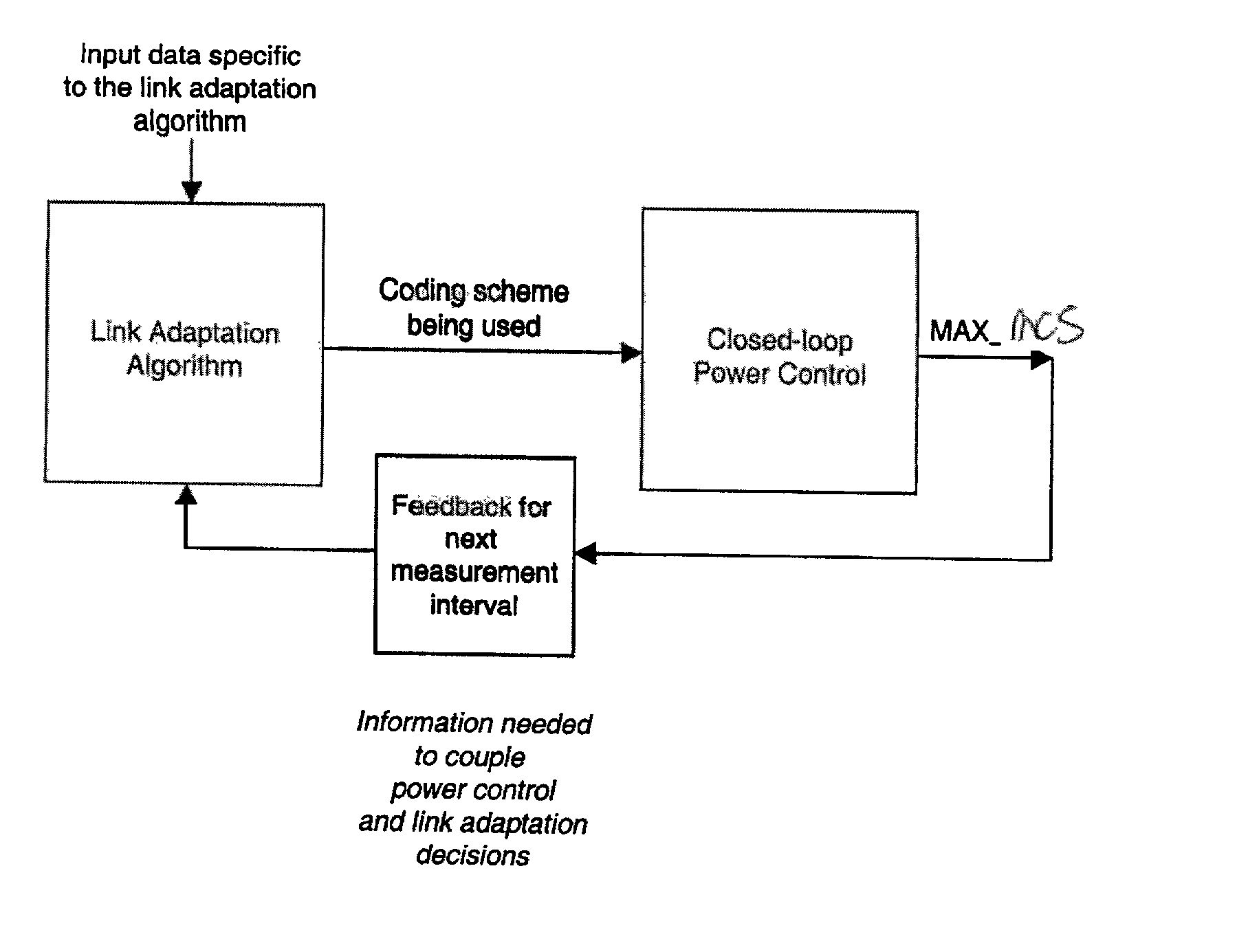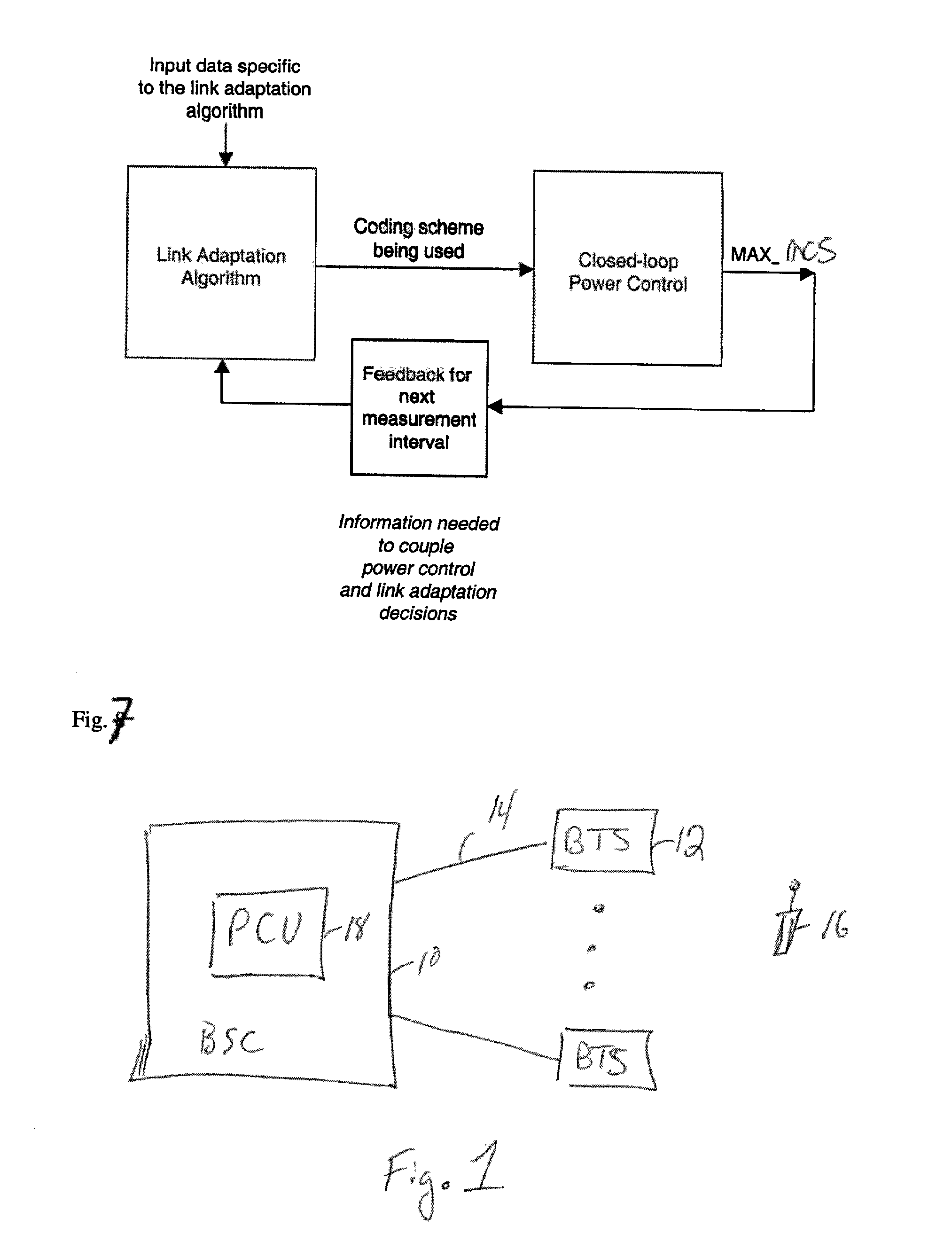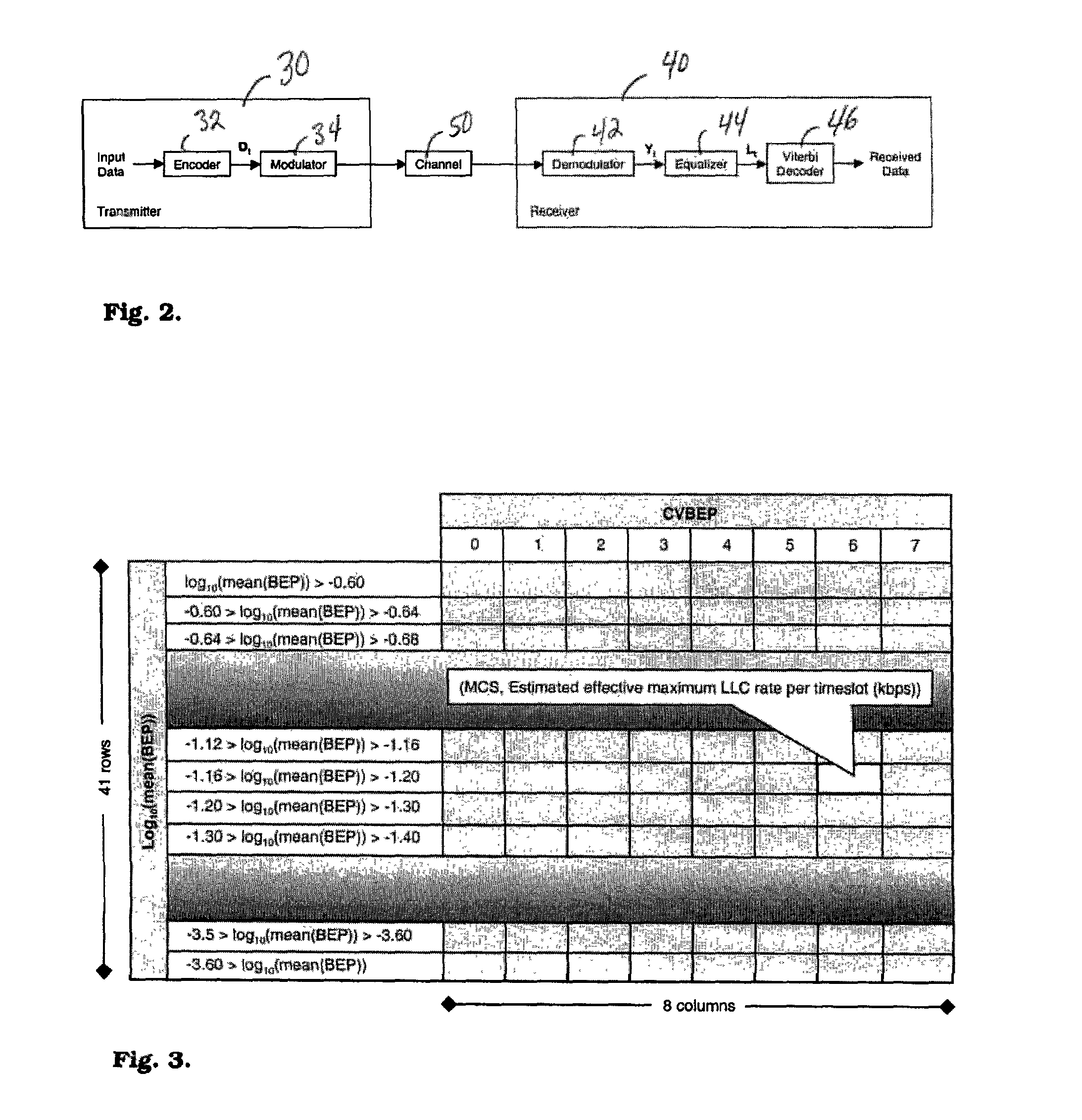Link adaption in enhanced general packet radio service networks
a general packet radio and adaption technology, applied in the field of enhanced general packet radio service networks, can solve the problems of not being corrected, unable to detect airlink errors, and 8-psk modulation is not as robust as gmsk, so as to increase the throughput of airlink, milk more capacity, and reduce the loss of performance
- Summary
- Abstract
- Description
- Claims
- Application Information
AI Technical Summary
Benefits of technology
Problems solved by technology
Method used
Image
Examples
Embodiment Construction
[0030] FIG. 1 illustrates an example of a portion of an Enhanced General Packet Radio Service (EGPRS) network. As shown, a base station controller (BSC) 10 communicates with one or more base transceiver stations (BTS) 12 over A-bis interface 14. The BTSs 12 communicate in a wireless fashion with mobile stations, such as mobile station 16, in their respective cells (not shown for the purposes of clarity).
[0031] The BSC 10 includes a packet control unit (PCU) 18 that prepares control and information data for transmission by the BTSs 12 to mobile stations according to the well-known EGPRS RLC protocol. The PCU 18 also processes data received from the mobile stations via the base transceiver stations 12 according to the EGPRS RLC protocol. More specifically, the PCU 18 performs the link adaptation methodology of the present invention. This involves selecting the downlink modulation and coding scheme (MCS) based on channel quality measurements received from the mobile station 16, and sel...
PUM
 Login to View More
Login to View More Abstract
Description
Claims
Application Information
 Login to View More
Login to View More - R&D
- Intellectual Property
- Life Sciences
- Materials
- Tech Scout
- Unparalleled Data Quality
- Higher Quality Content
- 60% Fewer Hallucinations
Browse by: Latest US Patents, China's latest patents, Technical Efficacy Thesaurus, Application Domain, Technology Topic, Popular Technical Reports.
© 2025 PatSnap. All rights reserved.Legal|Privacy policy|Modern Slavery Act Transparency Statement|Sitemap|About US| Contact US: help@patsnap.com



